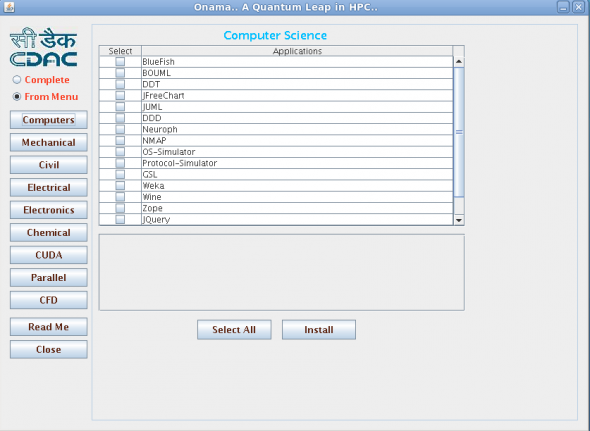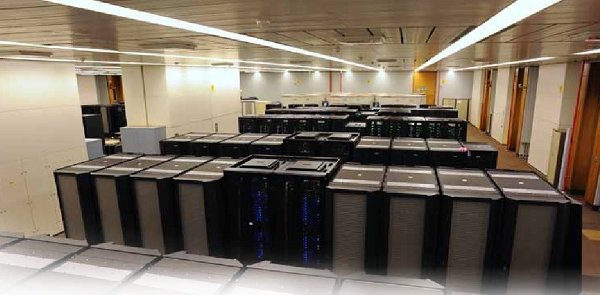
Scientists investigate that which already is; Engineers create that which has never been.
As Albert Einstein rightly said, engineering is the practical approach of humans to develop new machines, mechanisms and processes. Throughout human history, engineers have been responsible for rapid technological developments, be it fundamental inventions such as the wheel, or present-day high-tech lasers, spaceships, and supercomputers.
Engineering has penetrated into every possible sector, and has helped make our lives easier, safer, and more comfortable than those of our forefathers. And through these several achievements, engineers seek only one objective: technological utopia.
This dream can be achieved only by empowering our engineers with powerful and effective tools, and encouraging them to come up with inventions and innovations at a rapid rate. Thus, much effort has gone into the research and production of cutting-edge tools and equipment to help engineers reach this goal. One significant development of our times is the application of high-performance computing.
High-performance computing, also known as HPC, is the use of supercomputers and computer clusters in existing computing systems. It is expected that, in the coming years, HPC will help us catch up with the growing need of faster and better computers in all sectors.
To meet this anticipated demand, C-DAC has created an effective and versatile solution for today’s engineers and engineering students, called Onama. This is an integrated package comprising a well-selected set of parallel as well as serial applications, to be used across various engineering disciplines.
It is an amalgamation of HPC and open-source tools and technologies, and operates through the popular Linux operating system. It contains numerous nVIDIA CUDA-enabled applications that are widely used in domains such as molecular dynamics and bio-informatics.

Figure 1 shows the hierarchical diagram of Onama’s interaction with the HPC hardware. Coupled with three revolutionary HPC products from C-DAC, Onama hopes to change the perspective of today’s students, academicians, researchers, and engineers. To help engineering students understand the working of HPC and its benefits, Onama is being introduced in various Indian engineering colleges.
A C-DAC initiative
The Centre for Development of Advanced Computing, popularly known as C-DAC, is an autonomous body primarily involved in the design, development and deployment of advanced IT-based solutions in India. In fact, C-DAC is the pioneer in the field of supercomputers in India, and has served numerous central and state government organisations. Its activities are funded by the Ministry of Communications and Information Technology, Government of India.
C-DAC is dedicated to making HPC a tool to increase the competitiveness of Indian organisations and manpower, worldwide. To achieve this, C-DAC is focusing on strengthening HPC usage at the grass root level.
Today’s innovative engineering students are the ones who will be responsible for tomorrow’s technological developments. To enable them to fuel the HPC momentum and make their future endeavours more worthwhile, C-DAC has started an initiative to help educational institutes create HPC facilities within their premises. These facilities will act as a nucleus for all HPC-related activities in the institute, and will be scaled up to meet future needs.
For educational institutes, C-DAC’s product lineup consists of three HPC cluster options. Nisha Kurkure, team leader, HPCS (HPC Solutions Group), C-DAC, says, “Onama is an integrated package that opens a new door to future technocrats, providing them a quantum leap in developing a firm understanding through High Performance Computing in several engineering disciplines.”
This project includes the installation and commissioning of the HPC facility. Training on parallel processing and usage of the HPC facility will also be provided, to kick-start productive use of the infrastructure at the earliest. This offer is being provided by the HPCS, which has its base at the C-DAC headquarters situated in Pune.
HPCS has 20 years of experience in HPC design and deployment. The project is being overseen by a team of application developers dedicated to the development and porting of applications on parallel platforms. The HPCS technical support team keeps abreast with the latest emerging technologies in the field. These technologies will eventually be transferred to educational institutes through Onama, thus exposing students to the most current advancements in real time.
| HPC Cluster Options | |||
| DL 1000-based | Blades-based | DL 160-based | |
| Master node type | DL 170h | BL 280cG6 | DL 180cG6 |
| Disk space | 2×500 GB | 2×250 + 4×500 GB | |
| Switch | 24 port GigE | Blade GigE | 24 port GigE |
| Compute node type | DL 170h | BL 280cG6 | DL 160cG6 |
| Number of compute nodes | 3 | 3 | 7 |
Applications for different engineering disciplines
Onama is an integrated package designed to help aspiring technocrats develop a firm understanding of HPC in the various engineering disciplines. It consists of hand-picked tools for all major engineering disciplines. Figure 2 shows the official Onama installer, which allows users from different branches of engineering to select from the applications included. These applications are viable alternatives to traditional industry-standard software, and are actually used by a number of companies as well as individuals.

Sandeep Agrawal, team leader, HPCS Group, C-DAC, says, “Onama provides the engineers with the tools that have close affinity with the practical simulation, hence making the learning process a lot more applied. Many of the tools are GUI-based and hence reduce the learning curve.”
Mechanical engineering
Currently, the role of computers in mechanical engineering is very focused and limited. Numerous CAD/CAM software such as Spatial’s CAD interoperability & translation software, help mechanical engineers in the design, simulation, and analysis of products. For example, performing finite-element analysis on mechanical models is an indispensable process in almost all mechanical industries.
Presently, Onama offers various applications to help mechanical engineers perform these tasks. Q-CAD and G-Simple cater to all basic CAD/CAM requirements. Gas Dynamics Calculator (GDC) is a utility used to calculate several quantities in different compressible flow models. After defining the necessary parameters, it provides calculations for isentropic and isothermal nozzles, Fanno and Rayleigh flows, and also shock and oblique shock — using direct calculations.
To solve mechanical, transport, and fluid mechanics problems, engineers can use OOFEM, RHEOLEF, SLFFEA, Z88, Gerris and OpenFOAM. Mechanism lets you solve complex mechanical equations, and also plot the solutions in different forms.
Civil engineering
Civil engineering is a basic branch of engineering that doesn’t rely heavily on computing. However, Onama contains a few applications to help civil engineers perform complex calculations.
Aladdin and Frame3DD are very useful for the structural analysis of different types of cross-sections. JCAE is a Java-based environment for running different CAE applications. Euler, on the other hand, is powerful numerical software like Matlab.
With the advent of more complex civil structures, it is expected that HPC will help civil engineers perform faster and more accurate analysis.
Electrical engineering
The electrical engineering componant of Onama includes numerous software to calculate and predict electrical parameters. Basic circuit design can be accomplished using X-Circuit and Electric. Eq Resistor, Induction Motor and BPF help to calculate inductances, resistances, impedances, frequencies, and resistor combinations for a designed circuit.
Electronic Design is a toolkit used for conversions between various electrical parameters. MICRO_VAPR is an application dedicated to the design of different types of inductors.
Electronics engineering
Logisim, PCB and Tk-Gate are useful applications for designing and simulating complex circuits as well as individual printed circuit boards. TranCalc is an analysis and synthesis tool that lets users calculate the electrical and physical properties of RF and microwave transmission lines.
MEEP is a powerful finite-difference time-domain simulation software package used for modelling electromagnetic systems. It was developed by the Massachusetts Institute of Technology, and is very popular among electronics engineers.
Dinotrace is a waveform viewer that understands numerous trace formats. It allows placing cursors, highlighting signals, searching, printing, and numerous other capabilities. For engineers using the NEC2antenna modelling software, Antennavis provides a simple and fast way to render NEC antenna outputs.
Chemical engineering
Most chemical engineers attribute their greatest developments to powerful computers that helped them perform inhuman calculations. Onama contains several molecular drawing programs to generate two- and three-dimensional representations.
Avogadro, BkChem, REDMD, JMOL, and JChemPaint are designers and simulators for molecular dynamics. XmakeMOL is a simple mouse-based application useful for measuring bond lengths, bond angles, torsion angles, and such quantities. TOXTREE helps estimate the toxic effect of different chemical compounds. The Massively Parallel Quantum Chemistry (MPQC) program provides implementations for several important methods in quantum chemistry.
Computer engineering
Computer engineering and information technology revolve around the development of faster and better software for other sectors. Thus, this field has seen more open source development than any other. Onama includes the most popular computer engineering applications that are used by industry professionals.
Bluefish is a versatile Web development editor that supports numerous technologies. DDT is a database design creator that also allows the importing of SQL descriptions. BOUML is a very fast code generator for C++, Java, PHP, and Python. JUML is a reverse-engineering tool for decoding Java source code to create relationship diagrams based on UML.
Neuroph is an object-oriented neural-network framework that can be used to create and train neural networks through Java. OS-Simulator is a versatile simulator that supports scheduling, deadlocks and advanced memory management. Zenmap is a network-mapping tool that is useful for security auditing and network exploration.
Onama is also equipped with Parallel Python, a Python module that can be deployed across systems with multiple processors or cores.
In addition, Onama consists of numerous parallel and CUDA-based software, which unleash the true power of HPC. Some of the basic parallel programs include parallel matrix—matrix multiplication with different algorithms, sorting programs, etc.
Onama and open source
The Onama applications included essentially consist of open source tools and libraries. Until a few years ago, major corporations considered open source developers to be outlaws, and their creations were rebuffed without any enthusiasm. However, this scenario is rapidly changing thanks to Linux, and other similar initiatives, which have become increasingly popular not only among freelance developers, but also among the general public.
The biggest reason for this is the approach of open source developers and community members towards their products. The main objective of open source development is to create effective and robust software that can be used by people all over the world. On the other hand, software companies concentrate mostly on maximising their profits and user base.
Open source applications have a number of advantages over traditional proprietary software. The source code is freely available, and can be customised to suit the institution’s needs. The associated monetary costs are also negligible when compared to the industry standards, because of the open development.
However, open source technologies do suffer from two major drawbacks. Compared to industry standards, the development is very volatile, and there is sometimes limited professional/commercial support available. More often than not, users are left at the mercy of the lead developers, as the community’s interest dies down. However, almost all software included in the suite has been under active development for a long time. As the institutes and students become a part of the community, they can help streamline and further this development. Thus, Onama offers a number of advantages for interested institutes, engineering students, as well as open source enthusiasts.
Where we stand
A number of key issues and trends in HPC will impact the delivery of breakthrough science and engineering in the future. For instance, modelling and simulation are playing a greater role in all scientific disciplines — be it understanding the molecular processes in cells, or designing of next-generation batteries for hybrid vehicles.
For many sectors, computing is not only the fastest and most cost-effective tool for discovery, it is the only one. And Onama will definitely help our budding engineers prepare for the future.
















































































